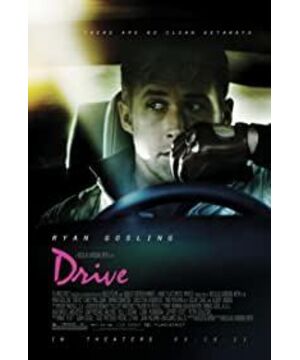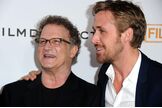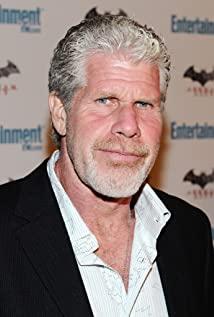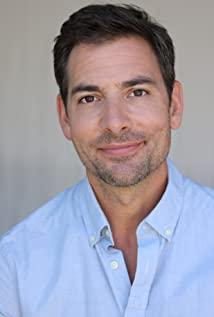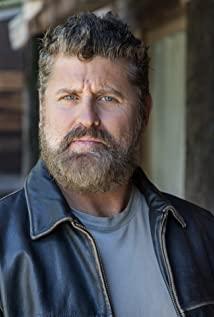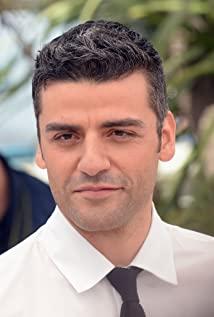Ryan Gosling performed this seemingly calm, restrained and reticent male protagonist, who exudes a feminine temperament, but can burst out in a moment of crisis or anger. The first half of "Desperate Driving" spent a lot of money. Time portrays his character, but deliberately hides his name (the ending credit list directly shows Driver). It can be said that the protagonist blends with the temperament of the whole movie, and they are so freely retractable. The director described the emotional development process of the hero and heroine with tenderness, but in a few violent scenes, he can instantly release tension and shock, putting the whole movie at the perfect intersection between rigidity and softness.
[Spoiler alert] A
few violent scenes must be emphasized. In the first scene, in the hotel, the protagonist is ambushed by two gangsters. The director first chose to use slow motion to compare with the suddenness of the incident, highlighting what the actor must do in that moment of struggle, and when the actor decides to face them head-on, the director uses several quick and neat edits to cut the actor. The aroused violence appeared on the screen. At the end of the scene, the protagonist stands at the door of the bathroom, fixed the camera at him, splattered with blood, and slowly retreats to his face behind the wall. Because this scene was an emergency and resolved quickly, only the strange woman was headshot and the actor pierced the killer's chest with an iron pipe to stimulate the eyeballs.
The second scene takes place in the backstage of a nightclub or strip club. The protagonist rushes in with a hammer and puts the enemy to the ground. In the center of the camera is a confrontation between the hero and the enemy, and behind them are a group of dancers sitting naked in front of the dressing table. Their calm onlookers are in sharp contrast to the tight confrontation between the hero and the enemy in the center of the camera. Although there are no too violent scenes in this scene, the scene scheduling and editing are excellent and very enjoyable.
The third scene takes place in the elevator and is definitely one of my favorite scenes in the whole film. The protagonist begged the heroine to follow him, and the heroine slapped him. At this moment, the elevator door opened and a strange man stood inside. The hero and heroine walked into the elevator, and the hero and the strange man stood side by side in the front. The protagonist immediately discovered that the stranger had a gun in his arms. Tension spreads in the narrow elevator room, and the director uses slow motion: the actor pulls the heroine behind him with his right arm. At this time, the lights in the elevator are reduced, and the after-light is focused on the heroine’s face, and the hero turns around. The body gave the heroine a long, gentle and sweet kiss. When the light gradually turned on, the actor left the heroine and turned to face the strange man. At this time, the enemy finally took out his gun. The actor again neatly dropped the opponent to the ground, and then slammed his head with his feet until it burst. Covered in blood, he turned to look at the heroine. She had walked out of the elevator and looked at him in horror, but he just watched the elevator door close and the heroine disappeared in front of him. There were no lines in the elevator in the whole scene, but there was tension and violence in romance, and the kiss stopped me from breathing. It was perfect.
In the fourth scene, the protagonist drove the Boss car over on the beach. Searchlights continued to shoot at the beach late at night. The Boss climbed out of the car and looked back. He saw the masked protagonist standing in front of the car lights like death. Upon coming, the frightened Boss fled into the sea. The hero followed him into the sea. The camera looking down gradually zoomed out. The visual deviation made people feel that the waves rolling in from the darkness were devouring the hero and his prey. At this time, the sound of the waves was full of waves. Binaural. This scene is really beautiful.
The actor was originally an unknown person, living a life of multiple identities in a muddle-headed manner. In the movie set, he had to act as another person and risk his life to complete the speed stunt for him. After everything happened, although he was still an "unknown person", he gained a lonely heroic identity because of his love. But I really don’t really like the handling of the ending. The first is that Boss No. 2’s "stabbing" method is more brutal than before, which is difficult to explain; second is the final open ending, although the eyes of the hero in the rearview mirror of the car are It is looming under the street lights of the dark night, full of artistic conception, but I always feel that it is not enough for the fire, but in general, this is already considered a provocation, and the absolute flaws are not concealed.
The story of "Desperate Driving" is entirely reasonable, but the way it is told is absolutely unexpected. The director insisted on telling such a cliche Hollywood action gang story so wonderfully full of charm, photography scheduling and even lighting use, every detail strives to be perfect, many abrupt bloody and violent scenes are reminiscent of the seventies and eighties of the last century. Even the OST of the B-rated film of the 19th century is awesome. The male protagonist Ryan Gosling is really handsome and smokey. This character seems to be tailored for him. He and the character and the whole movie are inseparable from you and me.
This is a great movie, and all kinds of subjectivity and impulse made me give it five stars.
View more about Drive reviews


